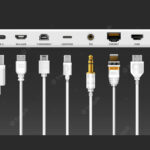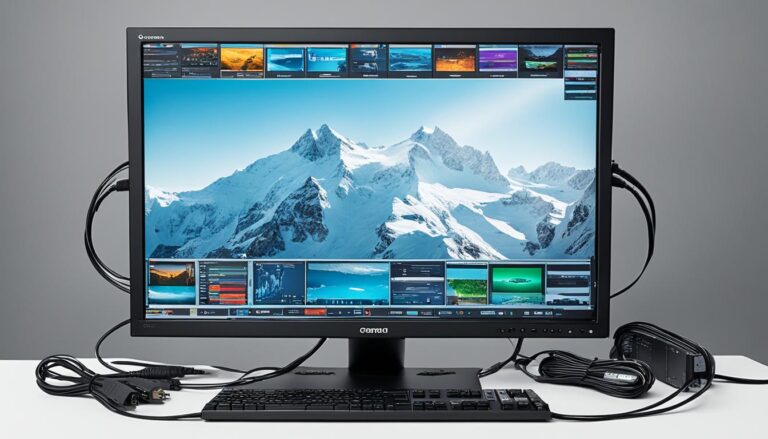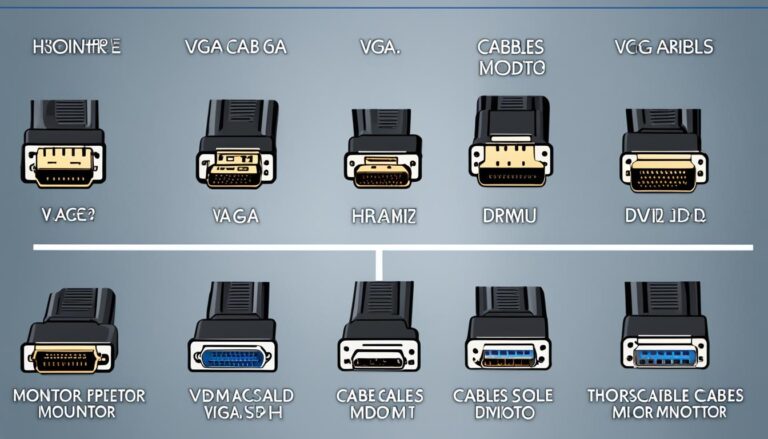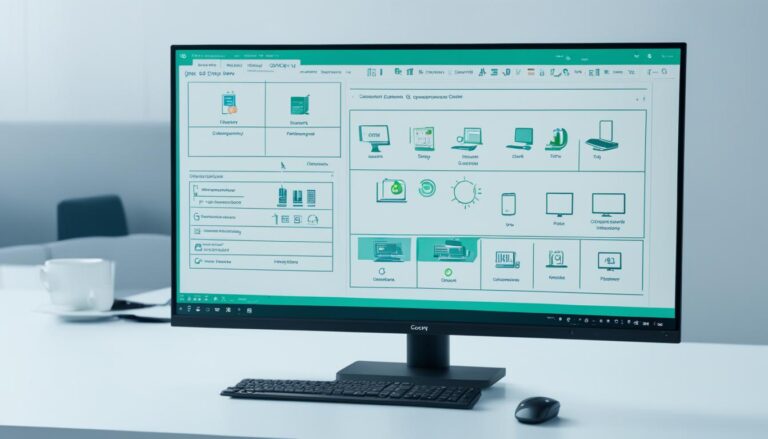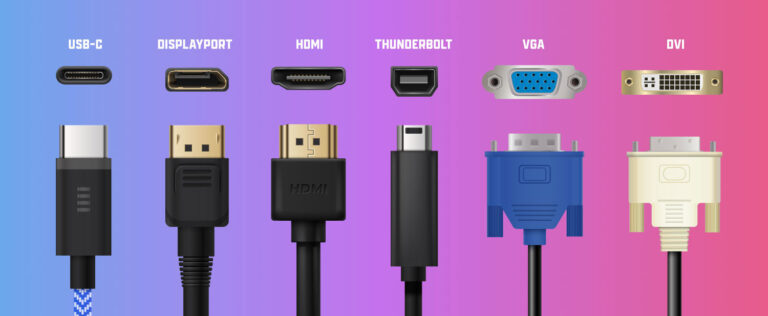Welcome to our comprehensive guide on port initials. This is a valuable resource for maritime professionals. Understanding port initials is crucial in international trade and transport, making operations smooth and efficient. Let’s dive in and explore port initials together.
Any place involved in international trade, like seaports or airports, gets a unique code. These are port initials. Shipping companies and freight forwarders use them for smooth communication. They’re essential on bills of lading, invoices, and contracts, making a common language for all.
The United Nations Economic Commission for Europe (UNECE) started the Code for Trade and Transport Locations (LOCODE) framework. It has over 103,030 locations in 249 countries assigned port initials. This database is key for maritime professionals worldwide.
Understanding port initials’ structure makes it easier to navigate ports. It helps in efficient communication among stakeholders. The size and location of ports are vital in shipping efficiency and logistics planning.
Different seaports have unique advantages for handling cargo. Choosing the right freight forwarder, who knows specific routes and ports, is essential. In this guide, we’ll explore the role of port initials in global trade and more. We aim to give you the knowledge to optimize your shipping operations.
So, let’s start this journey together. Let’s unlock the power of port initials.
The Role of Port Initials in Global Trade
Port initials are key in global trade and help things go smoothly. They let people use a standard way to talk about places in international trade and transport. With port initials, everyone in the supply chain knows where goods come from, where they’re going, and how they get there. This makes for better operations, logistics, and teamwork among all involved.
In the maritime industry, port initials are very important. Seaports are central to global shipping. Using port initials helps the trade world run well and keeps goods moving smoothly. Shipping companies and freight forwarders depend on these initials. They help them understand the vast web of ports and make smart trade decisions.
Having a system of port initials makes trade easier by bettering communication. It’s clearer than using long port names, which can be confusing. Port initials make sure everyone knows the exact places involved. This makes paperwork easier and helps everyone work together better in trading.
Benefits of Port Initials in Global Trade:
- Ease of Identification: Port initials make it easy to know places, helping with planning and chatting about logistics.
- Smooth Operations: They let everyone track goods well. This ensures things arrive on time and with less trouble.
- Trade Coordination: They help different trade players, like shipping firms, customs, and logistics providers, work well together.
- Efficient Logistics: Knowing port initials helps those in maritime work use the global port network well. This optimises route planning.
- Global Connectivity: Port initials give a common language for worldwide trade. This connects global ports and makes trade seamless.
Port initials streamline communication and teamwork in global trade. They’re vital for everyone, from maritime experts to freight forwarders, for managing trade well.
Understanding Port Initials Structure
Port initials tell us about their location. They include five characters.
The structure of port initials has two main parts:
- Country code: This is a standard code given by the International Organization for Standardization (ISO).
- Port/airport identifier: This unique set of characters marks a specific place within a country.
Sometimes, if all three-letter codes are taken, numbers may be used too.
Knowing what port initials stand for is key for smooth communication and planning in logistics. It helps identify both the country and the exact location.
For maritime experts and freight forwarders, understanding these codes is vital. It makes their work more efficient and improves the whole supply chain.
Example:
| Port Initials | Country Code | Port/Airport Identifier |
|---|---|---|
| USNYC | US | NYC |
| GBLON | GB | LON |
| JATOK | JA | TOK |
Importance of Port Size and Location
The size and location of ports are very important. They help make shipping efficient and plan logistics well. Ports can be big or small. Each size has benefits and things to think about for businesses shipping goods around the world. The place where a port is can affect how easy it is to get to, how much it costs, and how well cargo is handled.
Big ports have lots of facilities and can do a lot for shipping. They have good roads, railways, and customs places. This helps move things easily and quickly. Big ports also have modern equipment. This means they can load and unload goods fast and without problems. This is great for cargo that needs extra help, like big items or things needing special storage.
Also, big ports can fit large ships. These ships carry a lot of cargo, which saves money. Working with big ports helps businesses save on shipping and be more efficient.
Small and medium-sized ports are great too. They’re close to cities and communities, which makes access and transport easier. This closeness helps save time, reduces traffic, and makes managing time better. Some small ports focus on special goods or industries. This gives them an advantage as they offer services and skills for those specific areas.
Even smaller ports can be really important locally. They might not be big globally, but they can handle a lot in their region. When looking at smaller ports, think about local needs and trade routes. These ports can be great for making things more efficient in local and domestic trade.
Thinking about the size and location of ports is key for shipping and logistics. Big ports offer lots of facilities and can handle big ships, saving money. Small and medium ports offer easy access, better connections, and special services. By looking at the benefits of different ports, businesses can make good choices. These choices help them be efficient and save money in shipping.
| Port | Size | Advantages |
|---|---|---|
| Port A | Large | Extensive infrastructure, handling of oversized shipments |
| Port B | Medium | Proximity to local city, specialization in perishable goods |
| Port C | Small | Niche expertise in automotive industry, convenient regional connectivity |
Port A:
Port A is big and has great facilities. It’s good at dealing with big shipments and special storage needs.
Port B:
Port B is near a big city. This makes transport easy and quick. It’s good at handling goods that go bad quickly, making sure they get where they need to go fast.
Port C:
Though small, Port C is known for working with the automotive industry. It offers services that car manufacturers and suppliers need. Plus, it’s well connected in the region, making it great for local and domestic trade.
Different Types of Seaports
Seaports are key players in global trade, helping move goods around the planet. They are sorted into categories based on their features and what they do. Understanding these categories helps in making smart logistic choices and picking the best port for shipping.
Inland Ports
Inland ports sit on lakes, rivers, or canals that connect to the sea. These ports let ships drop off goods closer to inland areas. This cuts down the distance goods need to travel by land, saving both time and money.
Dry Ports
Dry ports are inland but linked to sea ports through roads or railways. They work as part of sea ports, making it easier to move cargo. With these, the journey from sea to inland destinations is smoother, ensuring goods are moved efficiently.
Warm-Water Ports
Warm-water ports are open all year, free from ice. They’re in milder climate zones, so ships can come and go anytime. This avoids delays and keeps shipping steady, regardless of the season.
Bulk Ports
Bulk ports deal with goods needing bulk loading, like coal and oil. They have the right gear and space to handle and store large amounts of cargo. This makes them perfect for big shipments.
Container Ports
Container ports are set up for containerized goods. Containerization is a big part of today’s shipping world, making these ports central to trade. They have advanced tools and tech for dealing with containers efficiently.
While many ports can take different cargoes, knowing each type’s special features is key for good logistics. This knowledge lets businesses choose the right port for their cargo, considering their needs and rules. It’s also important to know about any rules for different goods to avoid problems during shipping.
Using each port type’s benefits helps businesses improve their supply chains. This boosts shipping speed and aids in global trade success.
Busiest and Largest Seaports in the World
Seaports are key to global trade, with size and cargo volume showing their value. The top ones move loads of cargo every year, boosting shipping and trade. They are vital for planning in logistics.
The leading ports by cargo volume are:
- Shanghai, China (CNSHA)
- Singapore (SGSIN)
- Shenzhen, China (CNSZX)
- Hong Kong, China (HKHKG)
- Busan, South Korea (KRPUS)
- Ningbo-Zhousan, China (CNNGB)
- Qindao, China (CNTAO)
- Guangzhou Harbor, China (CNCAN)
- Jebel Ali, Dubai, United Arab Emirates (AEJEA)
- Tianjin, China (CNTSN)
These ports handle millions of TEUs each year. They play a big role in world trade. By managing goods efficiently, these ports keep supply chains running smoothly.
Importance of Busiest and Largest Seaports
Major seaports move goods efficiently on a large scale. This helps buyers and sellers around the world. They have advanced facilities and networks for easy operation. High volumes attract big shipping companies, linking global supply chains.
Strategic Planning and Decision-making
Knowing about major seaports helps businesses plan and make decisions. This knowledge lets them choose the best shipping routes. It also helps cut time and costs. Plus, it connects them to efficient logistics and big market advantages.
Enhancing Shipping Operations
Working with top seaports makes shipping smoother. They offer modern infrastructure and quick cargo handling. This leads to reliable, on-time deliveries. They also provide extra services like storage and customs, making shipping even more efficient.
Choosing the Right Freight Forwarder
When you’re picking a freight forwarder, consider several factors. Think about the shipping route and port availability. Freight forwarders handle the transport and logistics of goods. They support you from paperwork to customs clearing.
A good freight forwarder knows the best routes and ports for your goods. This ensures efficient and cost-effective transport. They can deal with the complexities of these routes, making operations smoother, quicker, and cheaper.
It’s also important to think about your budget. Shipping costs can affect your profit. Look for a forwarder who offers good rates without compromising service quality.
The kind of goods you’re shipping matters too. Some products need special care, like cool storage or careful handling. Choose a forwarder experienced with your type of goods to keep them safe and follow regulations.
Consider how fast you need your goods delivered. If your shipments are urgent, you’ll need someone known for being on time. A forwarder with a good delivery record can meet your deadlines.
Working with a capable freight forwarder makes international shipping easier. Pick someone who gets your route, minimises costs, and fits your needs. This ensures smooth shipping and less trouble.
To find the best freight forwarder, weigh different factors that affect your shipments. A thoughtful choice leads to a strong partnership. This helps your global trade succeed.
Conclusion
Port initials are key to global trade and freight moving smoothly. These codes make it easy to know where goods start and end up. They help those in maritime roles pick the best shipping paths. This includes looking at port size and location plus different types of seaports.
Pairing up with a trusted freight forwarder boosts this efficiency. It ensures everything runs well from start to finish. Using port initials wisely helps companies stand out in the global market. This matters a lot for doing well in international trade today.
Getting the hang of port initials and working with expert freight forwarders is clever. It means you can ship goods cheaper and better overall. Knowing how port initials affect shipping is vital for success in international trade.
FAQ
What are port initials?
Port initials are unique codes for places in international trade and transport. They have five characters, including a country code and a special code for the port or airport.
Why are port initials important in global trade?
Port initials let us clearly and quickly identify specific locations in international trade. They ensure that trade and transport flow smoothly and that everyone involved coordinates well.
How do port initials work?
Each port initial combines a country code from the International Organization for Standardization (ISO) and a special port/airport code. Knowing port initials helps identify the country and exact place linked to a code.
How does the size and location of ports impact shipping efficiency?
Big ports often have better facilities and can handle bigger ships, cutting shipping costs. Smaller ports have local benefits and special services that are useful in some markets.
What are the different types of seaports?
Seaports vary like inland ports, dry ports, and others. Each type is designed for different cargo handling tasks.
What are the busiest and largest seaports in the world?
Top busy seaports include Shanghai and Singapore among others. They handle a huge amount of cargo.
How do I choose the right freight forwarder for my shipments?
Look at the shipping route, port access, route and port knowledge, budget, goods type, and delivery speed. A good forwarder makes shipping smooth and cost-effective.
What is the significance of port initials in shipping efficiency and global trade?
Knowing port initials helps in navigating global ports, choosing shipping routes, and planning logistics. It makes businesses more competitive and boosts international trade.












